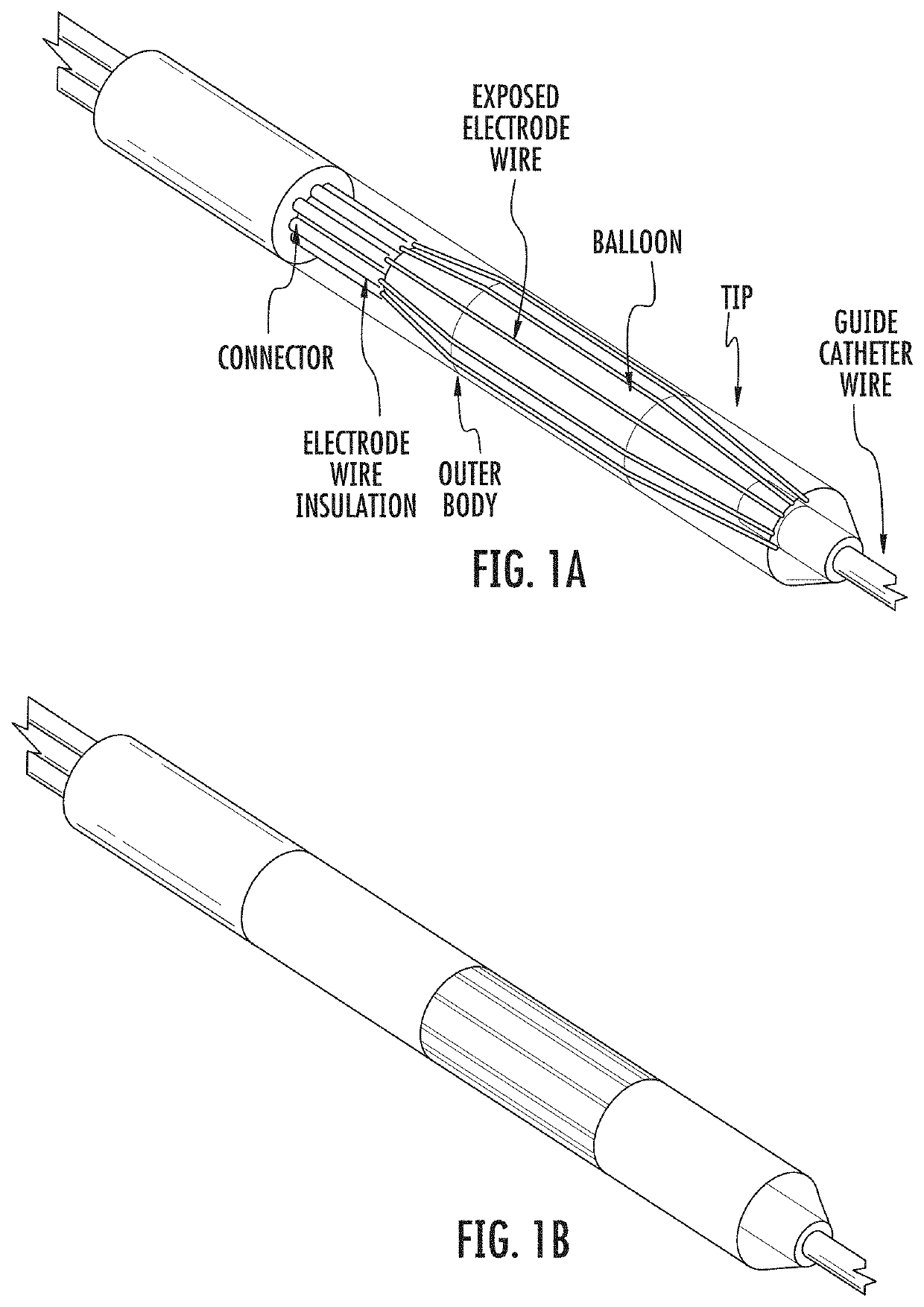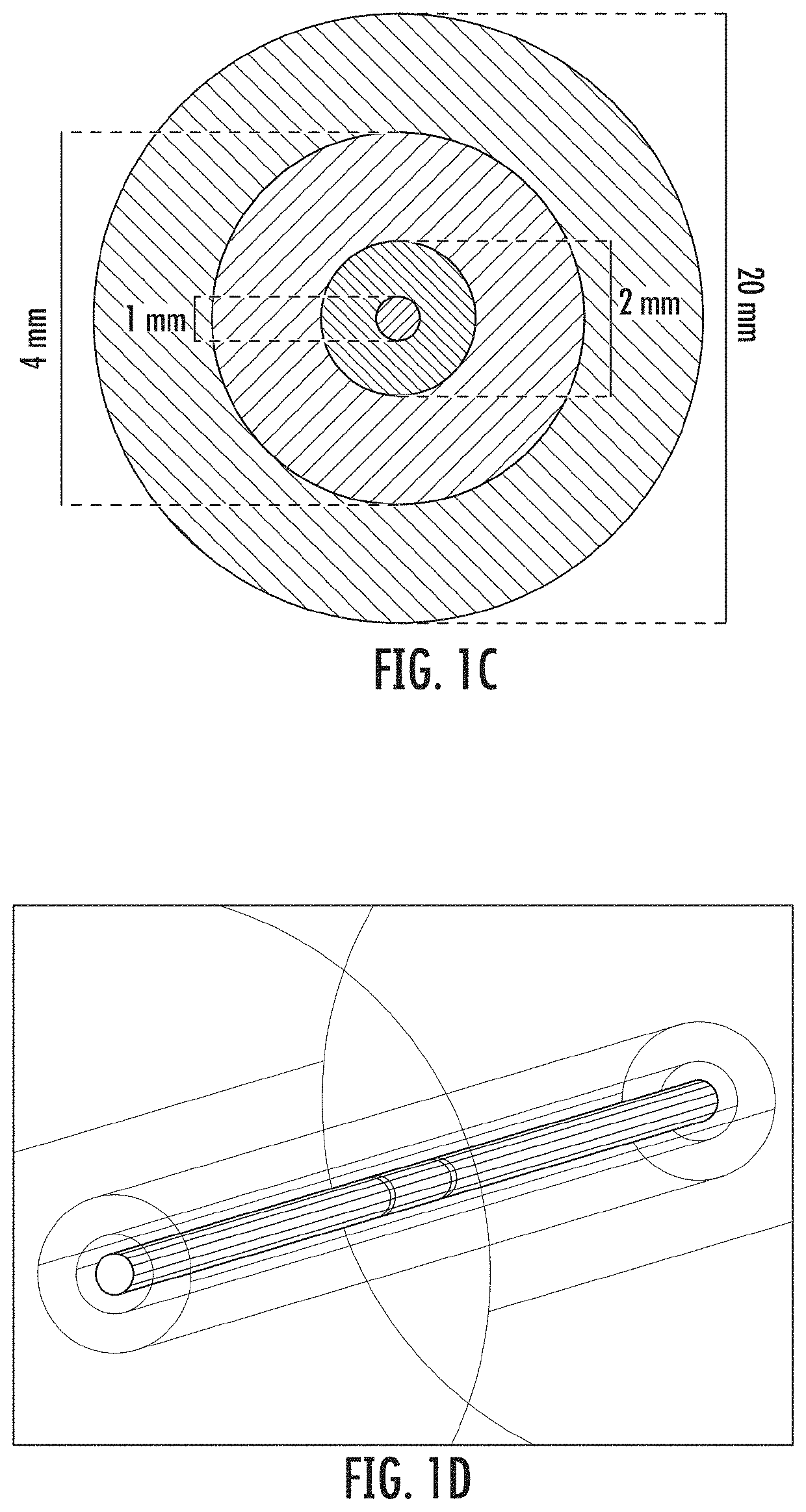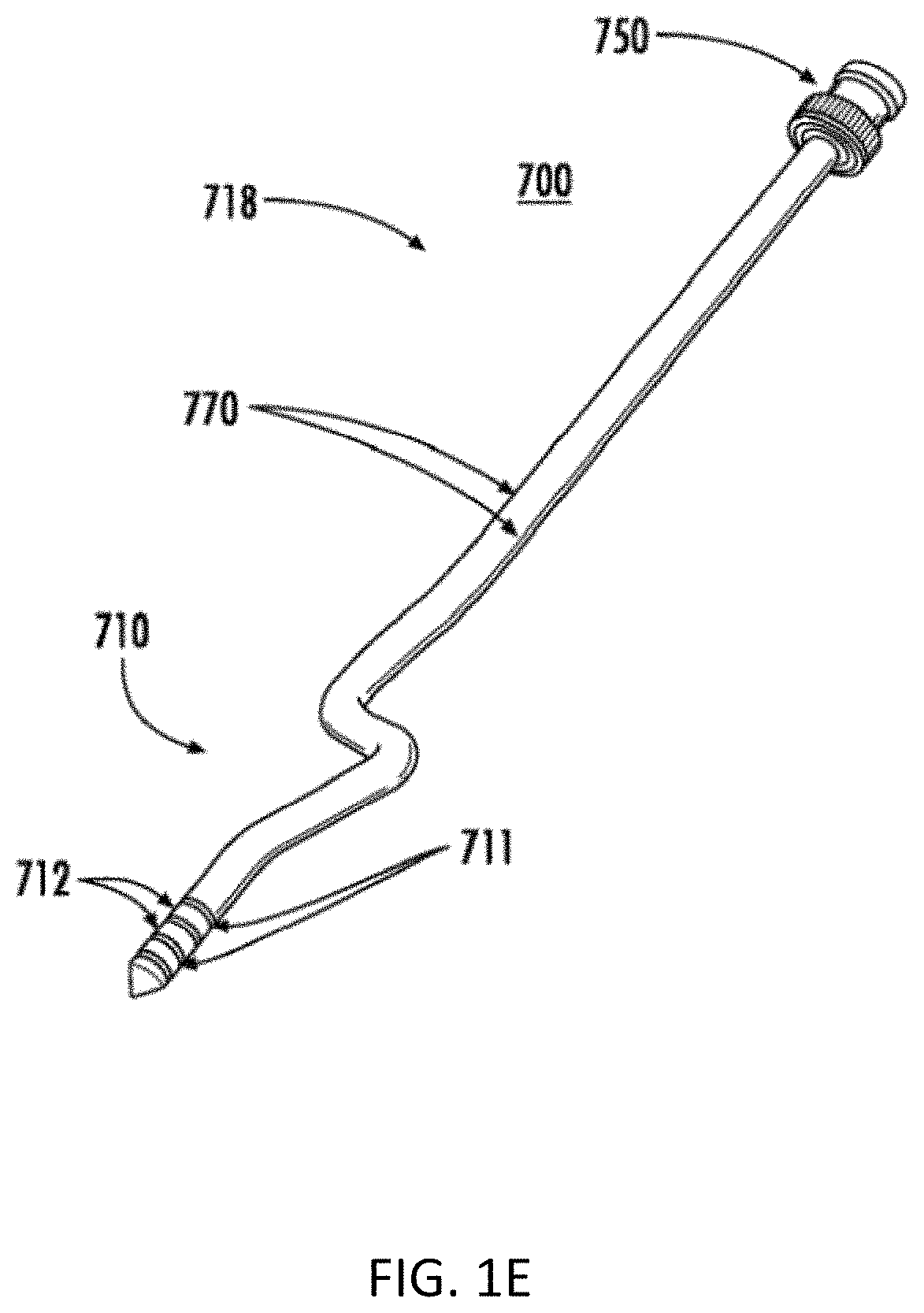Device and method for electroporation based treatment of stenosis of a tubular body part
a tubular body part and electroporation technology, applied in the field of balloon catheter devices, can solve the problems of limited or temporary success, exposing the patient to additional risks, and restnosis of coronary arteries and neointimal hyperplasia remain clinical problems, so as to minimize possible damage to surrounding healthy tissue and precisely target the lesion
- Summary
- Abstract
- Description
- Claims
- Application Information
AI Technical Summary
Benefits of technology
Problems solved by technology
Method used
Image
Examples
Embodiment Construction
[0086]Reference will now be made in detail to various exemplary embodiments of the invention. It is to be understood that the following discussion of exemplary embodiments is not intended as a limitation on the invention. Rather, the following discussion is provided to give the reader a more detailed understanding of certain aspects and features of the invention.
[0087]Embodiments of the present invention include devices, systems, and methods employing expandable radially targeting electrodes. The electrodes can be designed for endovascular-based electroporation therapies and adapted for implementation with catheter-based guidance. This type of electrode with independently energized surfaces is also adaptable to any number of physical and clinical scenarios where radial targeting is desired.
[0088]Preferred electrode designs can be configured to use the combination of electrically conductive wires with an angioplasty balloon to bring the electrodes into direct contact with the targete...
PUM
 Login to View More
Login to View More Abstract
Description
Claims
Application Information
 Login to View More
Login to View More - R&D
- Intellectual Property
- Life Sciences
- Materials
- Tech Scout
- Unparalleled Data Quality
- Higher Quality Content
- 60% Fewer Hallucinations
Browse by: Latest US Patents, China's latest patents, Technical Efficacy Thesaurus, Application Domain, Technology Topic, Popular Technical Reports.
© 2025 PatSnap. All rights reserved.Legal|Privacy policy|Modern Slavery Act Transparency Statement|Sitemap|About US| Contact US: help@patsnap.com



